Douglas McKay
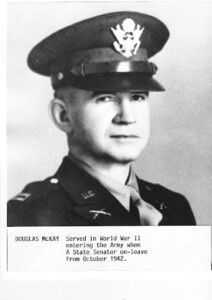
1942-1943. Capt. Douglas McKay wearing uniform with hat. U.S. army 1942-1945. WHC Collections 1998.024.0026
James Douglas McKay was born in Portland in 1893, the son of E. D. McKay, a farmer, and his wife Minnie Musgrove whose pioneer family had come across the plains to settle in Oregon. As a boy, Douglas worked for his grandfather, Malcolm McKay, on Sauvie Island, Oregon. Malcolm was an 1842 immigrant from Glasgow, Scotland, who had come to America to be a Hudson’s Bay Company storekeeper at Fort Vancouver.
Douglas McKay’s first job off the farm was at the age of 13 to help support himself and his mother. Later he sold candy in Portland theaters, delivered papers, and drove a meat wagon. He quit high school to work at a railroad office. He attended Oregon Agriculture College (now Oregon State University) in Corvallis where he was elected student body president in 1916 and earned a Bachelor of Science degree in 1917. That year he married Mabel Hill.
Their children, Douglas, Shirley and Marylou, were all born in Portland. McKay served in the First World War, rising to the rank of First Lieutenant. A severe arm injury suffered in the Argonne combat almost cost him his life: his death notice was printed in the Oregonian. Fortunately, his family had already received a cable assuring them of his care in a field hospital. This injury shaped his future life as it prevented his hoped-for career in agriculture.
He saw the growing popularity of automobiles and began selling for Francis Ford, becoming sales manager. In 1927 he was offered a automobile sales organization in Salem, then at Center and Commercial. He purchased the automobile agency, Douglas McKay Chevrolet – now Capitol Chevrolet.
By 1929, his family was in their home at 395 Jerris Street. In 1941 Mabel McKay and the landscape gardening firm of Lord and Schryver created a garden there. It would be the family’s only home in Salem. A natural-born politician, McKay was Salem mayor 1933 to 1934 and elected as state Senator 1935 to 1949. In that time the political positions in Salem were unpaid jobs, the state legislators met only two months a year. He continued to support his family with his automobile business.
A family tragedy occurred in 1939 when his son died in an automobile accident. In early December of 1941, McKay accompanied his daughter, Shirley, to Honolulu to attend the Willamette University versus University of Hawaii football game. After the Japanese air attack on the 7th, Douglas immediately volunteered for military service, but was turned down. He then assembled the football players and other young men, conducting military drills with rifles. Father and daughter returned to San Francisco on a hospital ship, three weeks after the attack.
McKay was anxious to return to his responsibilities here in Salem as Defense Chairman for Marion County. But his efforts did not end there: at the age of 48, he again joined the Army, serving at the nearby Camp Adair near Corvallis. He later enjoyed telling the story of how he was sent to Baker’s School, then returned to the post to be made Range Officer.
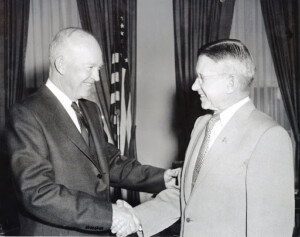
1956-04-06. Shows Dwight D. Eisenhower and Douglas McKay shaking hands in front of curtains and American flag. WHC Collections 2008.050.0018
In 1948, a plane crash killed Oregon’s top officials and the position of governor was filled by John Hall who served until Douglas McKay was elected that same year. In 1952 he met General Eisenhower at the Republican National Convention and later campaigned in Oregon for this candidate. After his election, President Eisenhower appointed McKay as Secretary of the Interior. The McKays spent four years in the nation’s capital, but were always eager to return to their home in Salem whenever possible. While in the nation’s busy, urban capital city, he enjoyed riding his horse – transported from Salem by auto van – in the woodlands of Rock Creek Park.
In 1956 his political supporters convinced McKay to run against Wayne Morse for the United States Senate. This was the first election he lost. He then served President Eisenhower on the International Waterways Commission. In 1959 his health declined quickly and he died here in Salem. His wife’s grief and loss continued until her own death ten years later. His life is memorialized by the love of his family and the continuing benefits his efforts have brought to Salem and the nation he served with energy and devotion.
Compiled by Virginia Green.
Bibliography:
Biographical information supplied by his daughter, Marylou Green.
This article originally appeared on the original Salem Online History site and has not been updated since 2006.



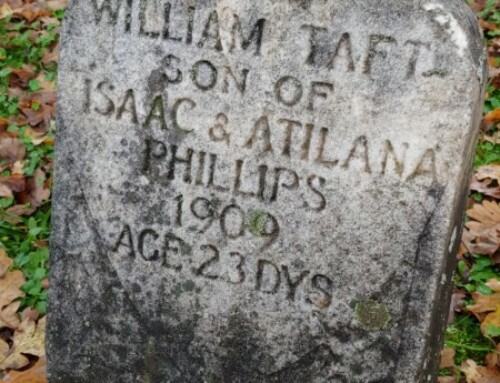


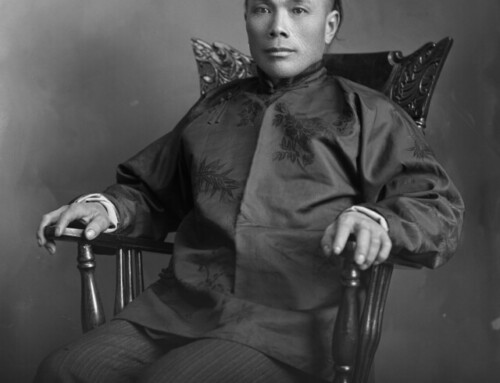
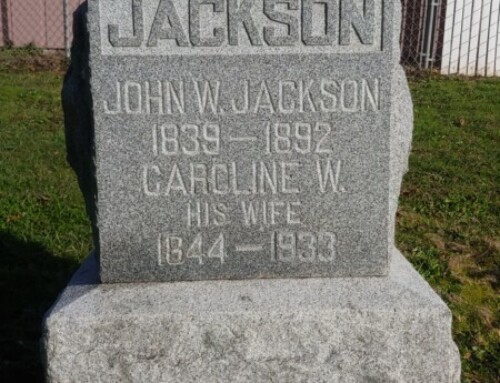
Leave A Comment